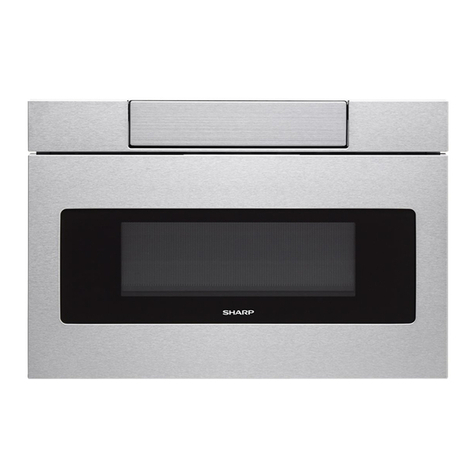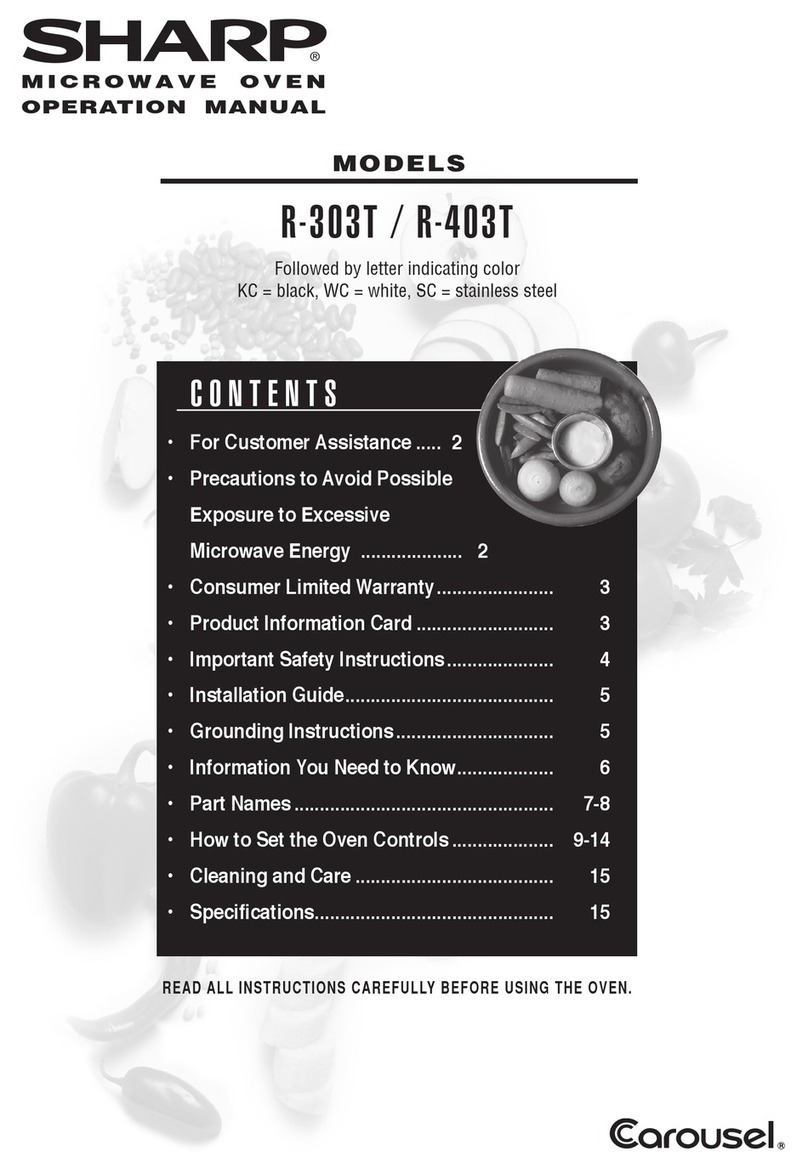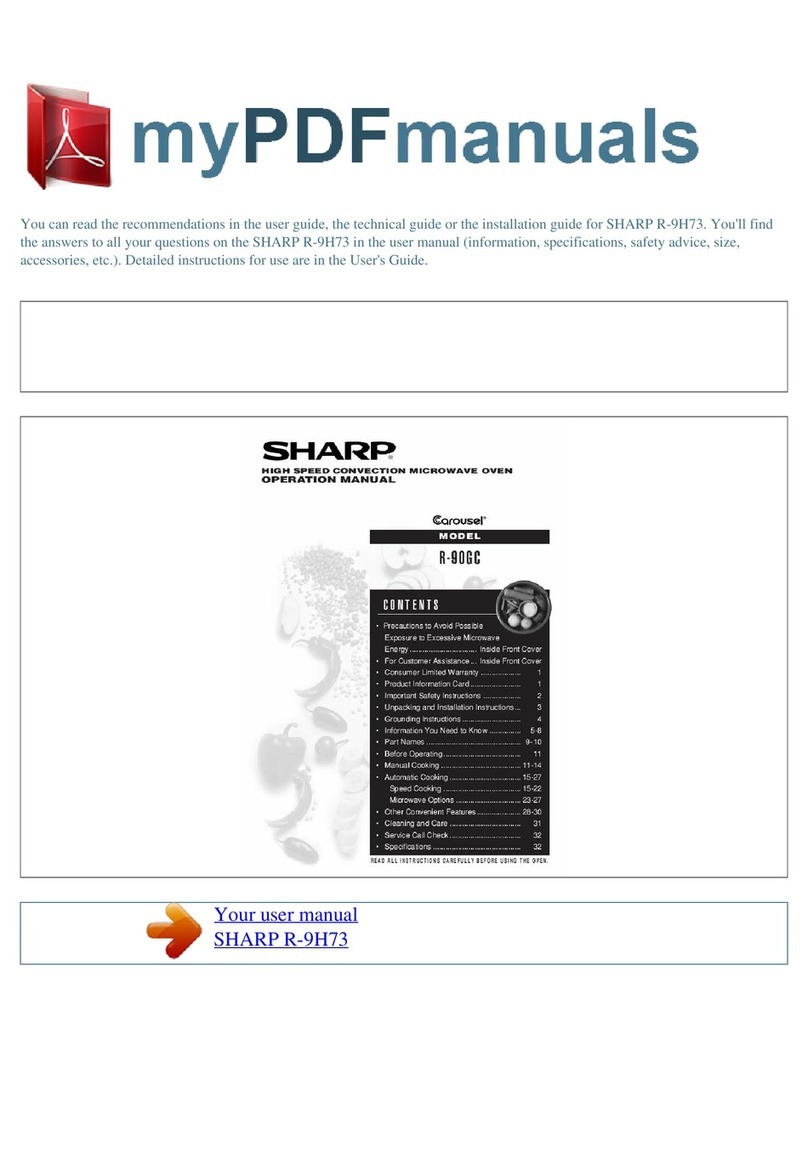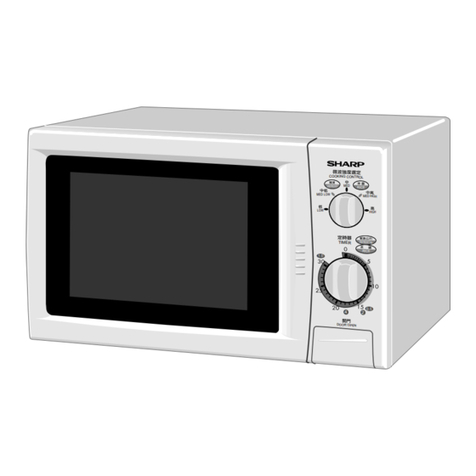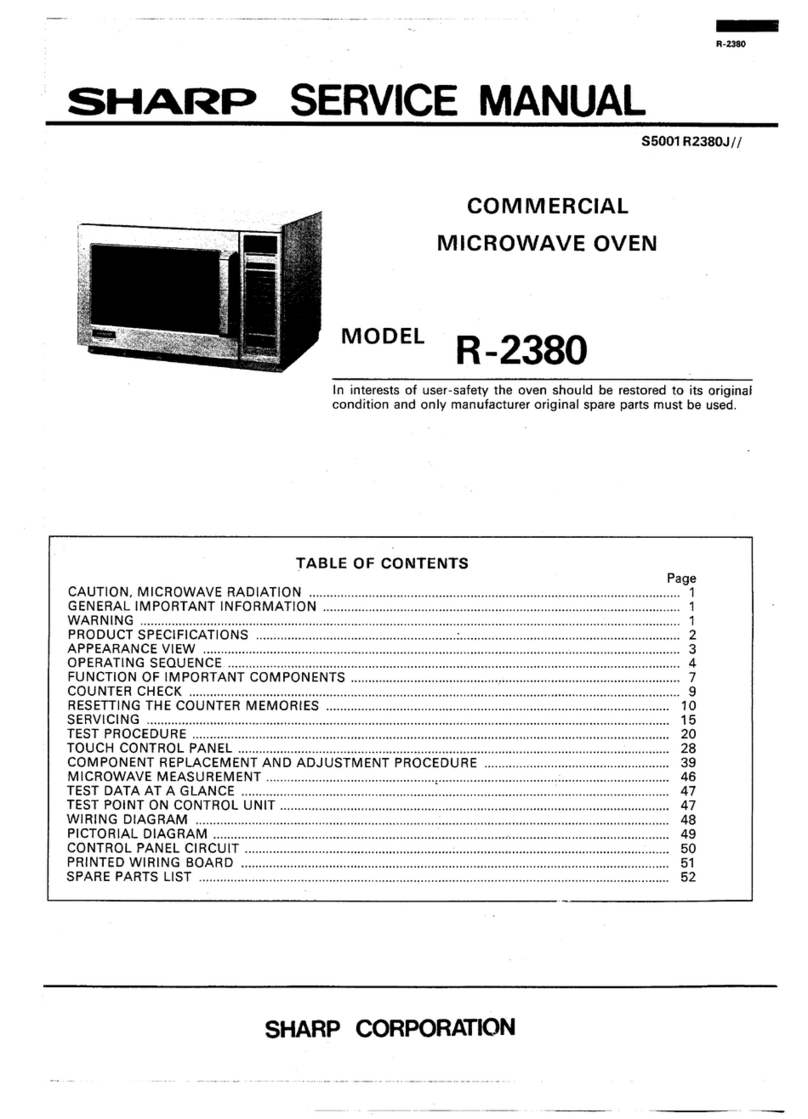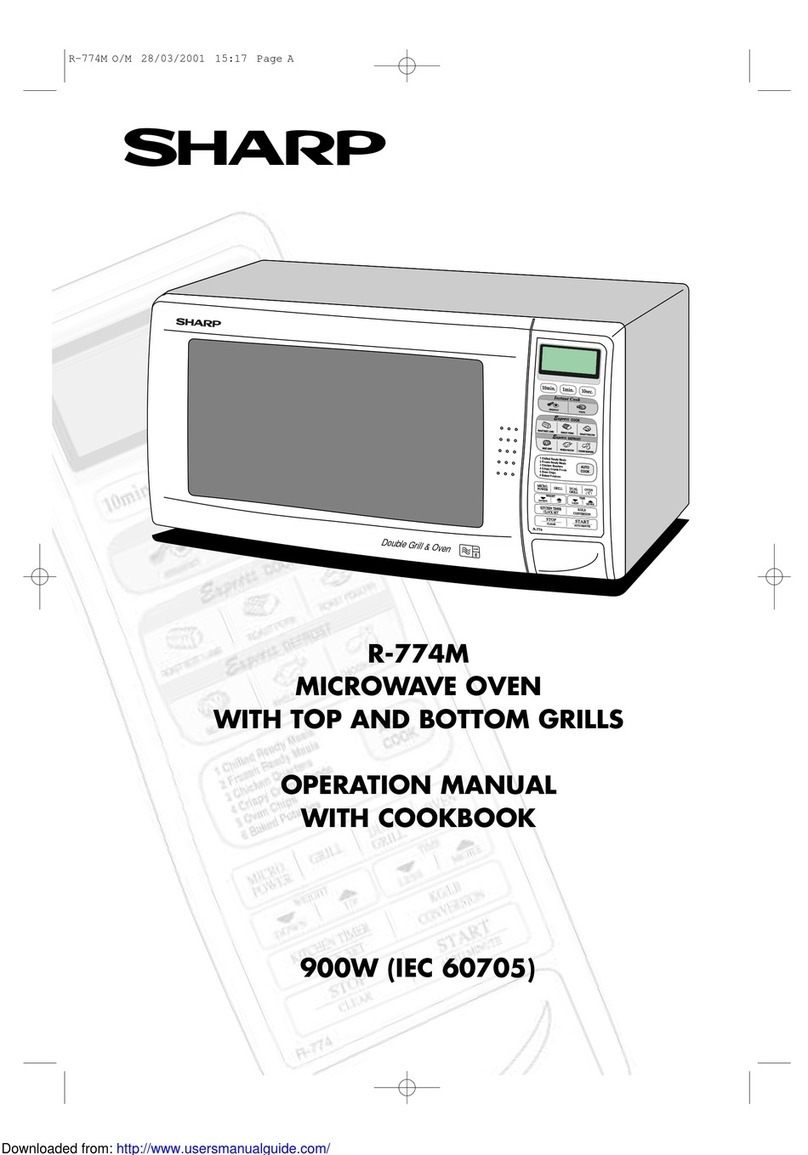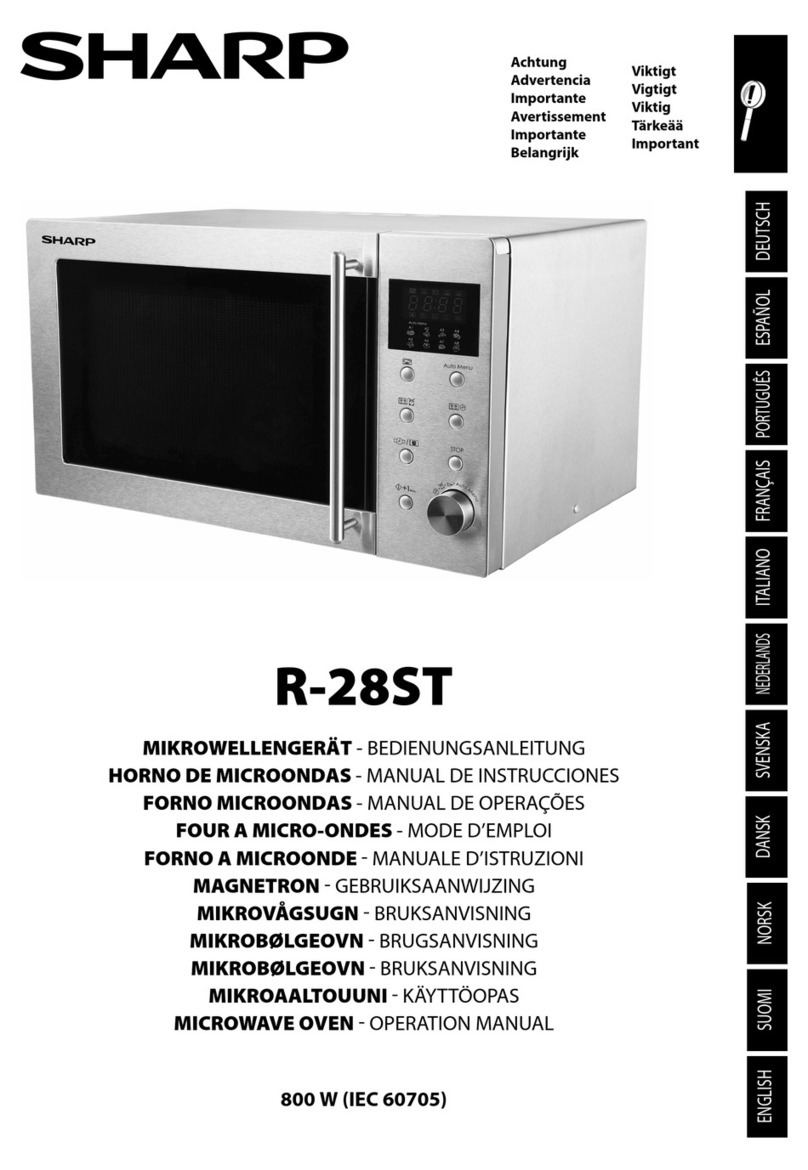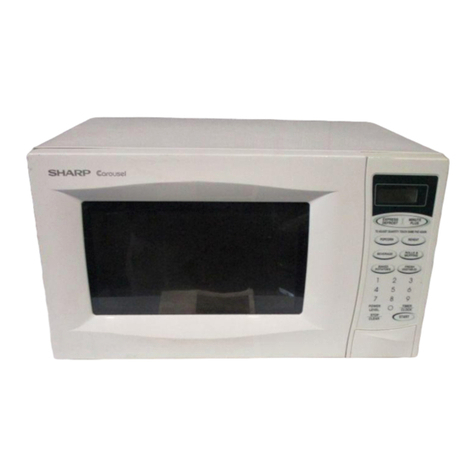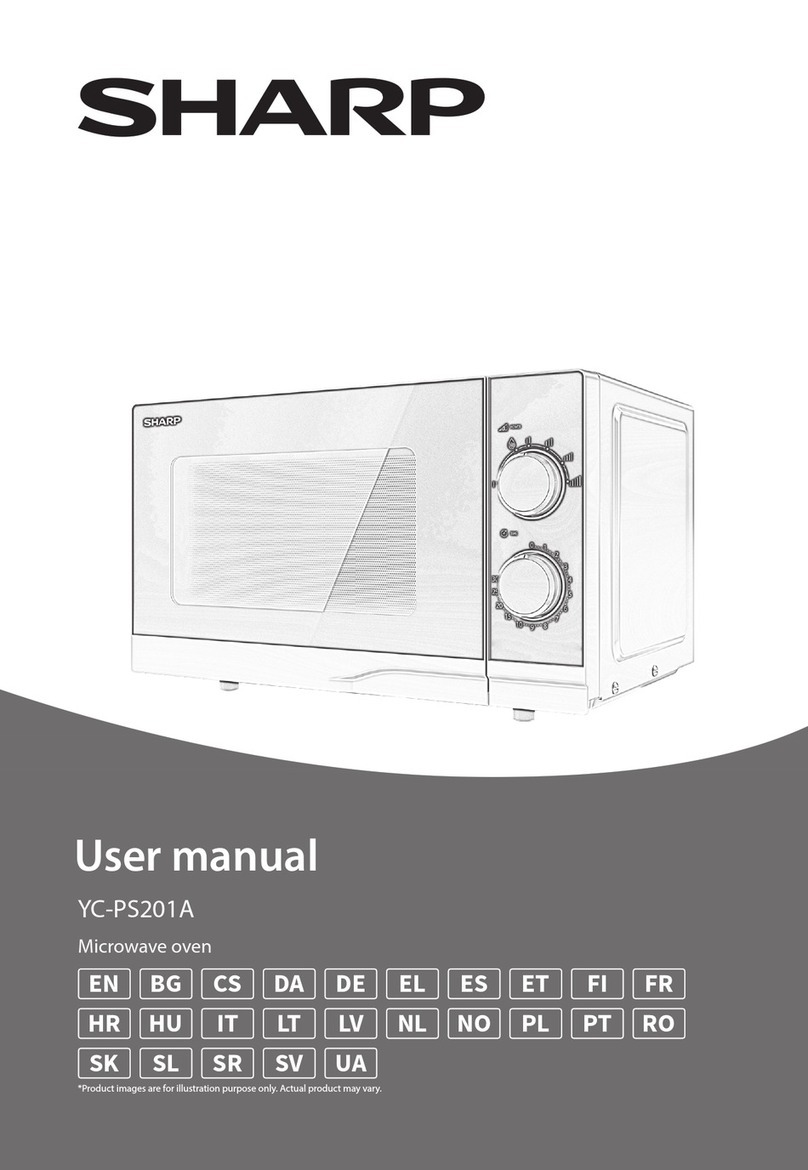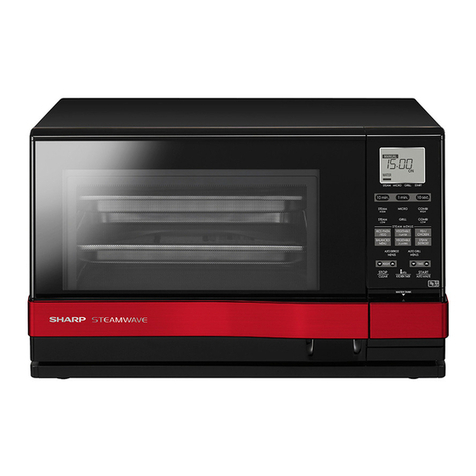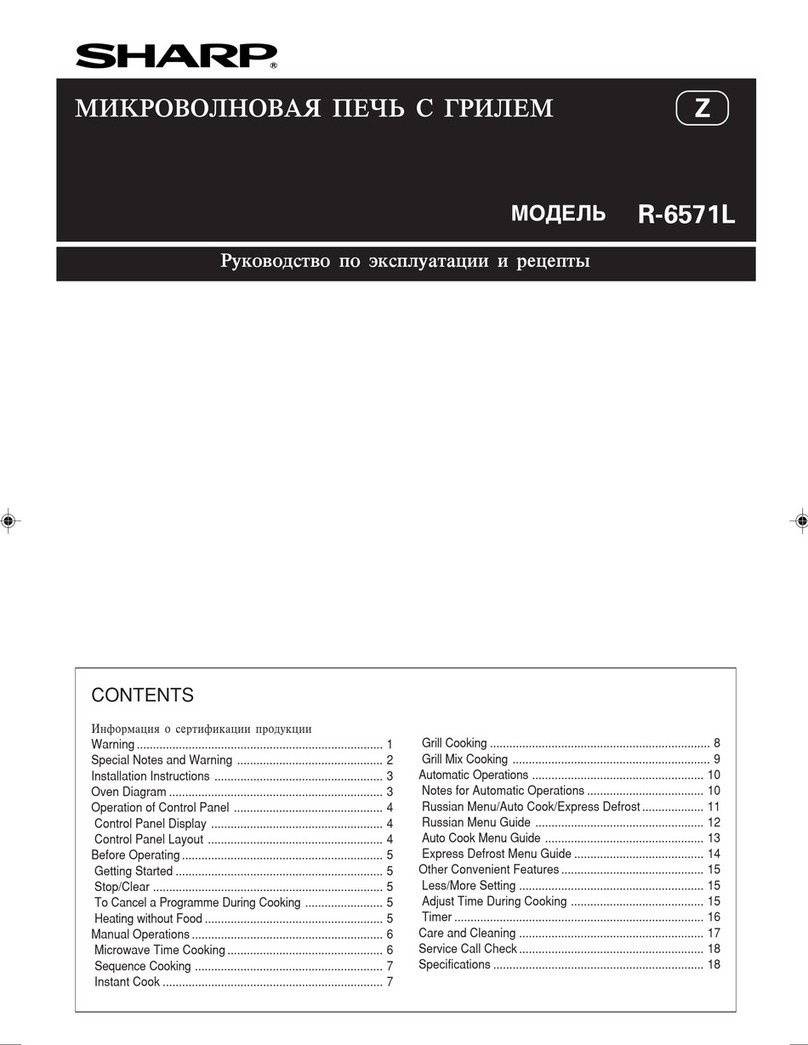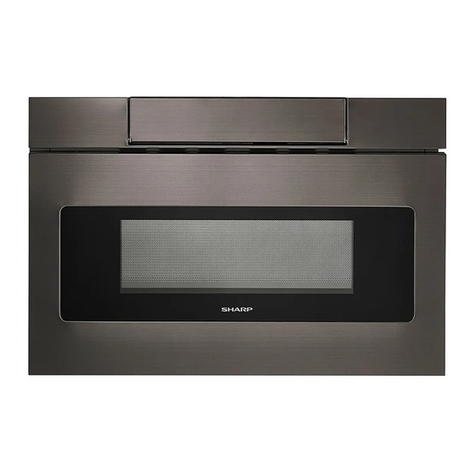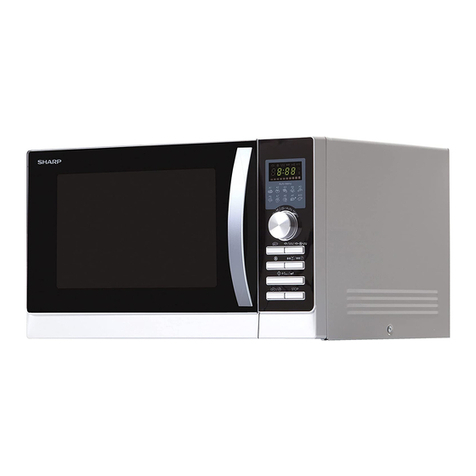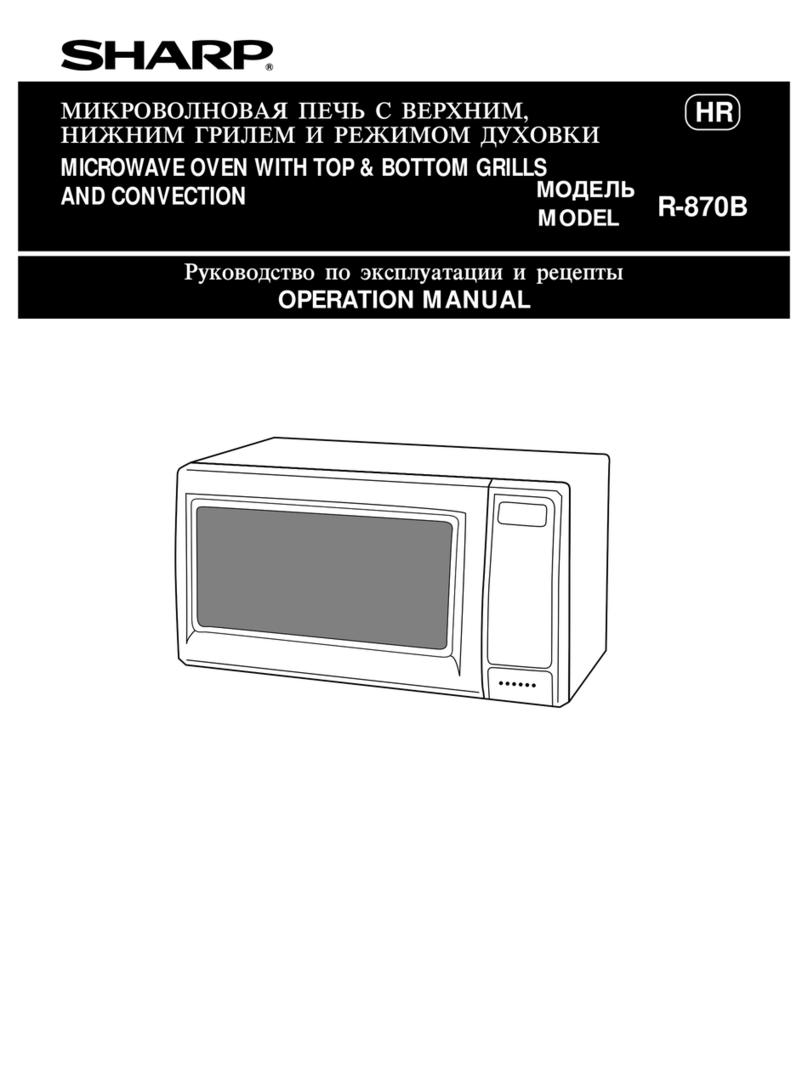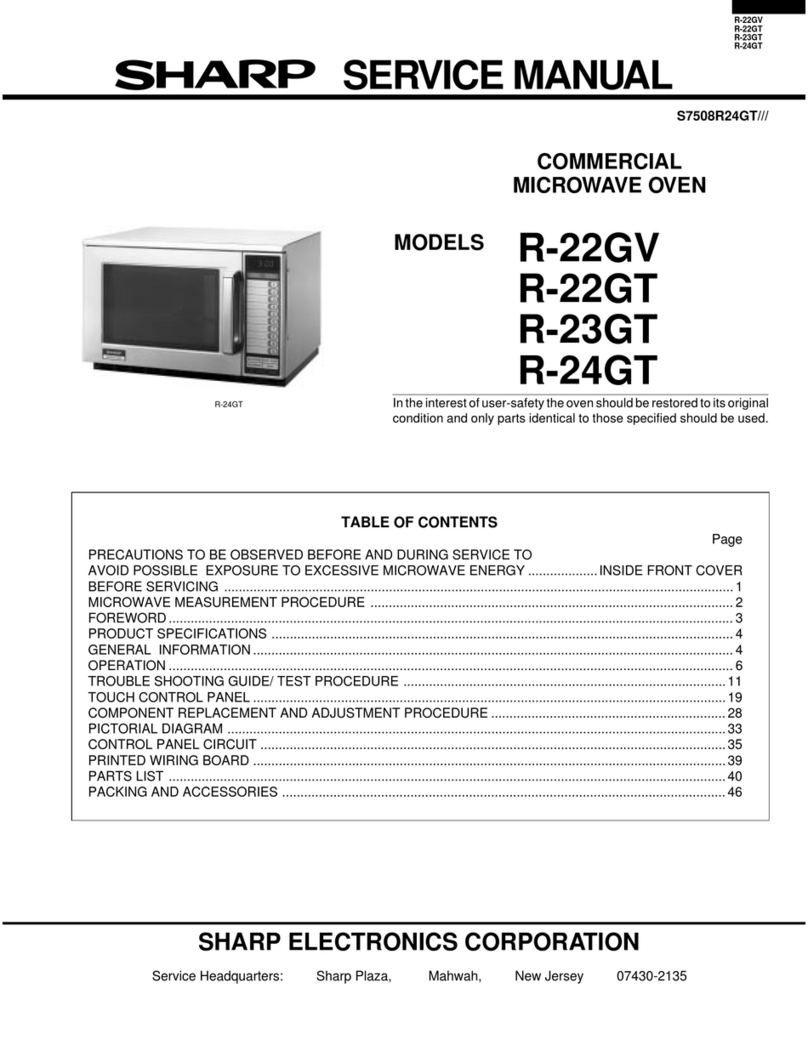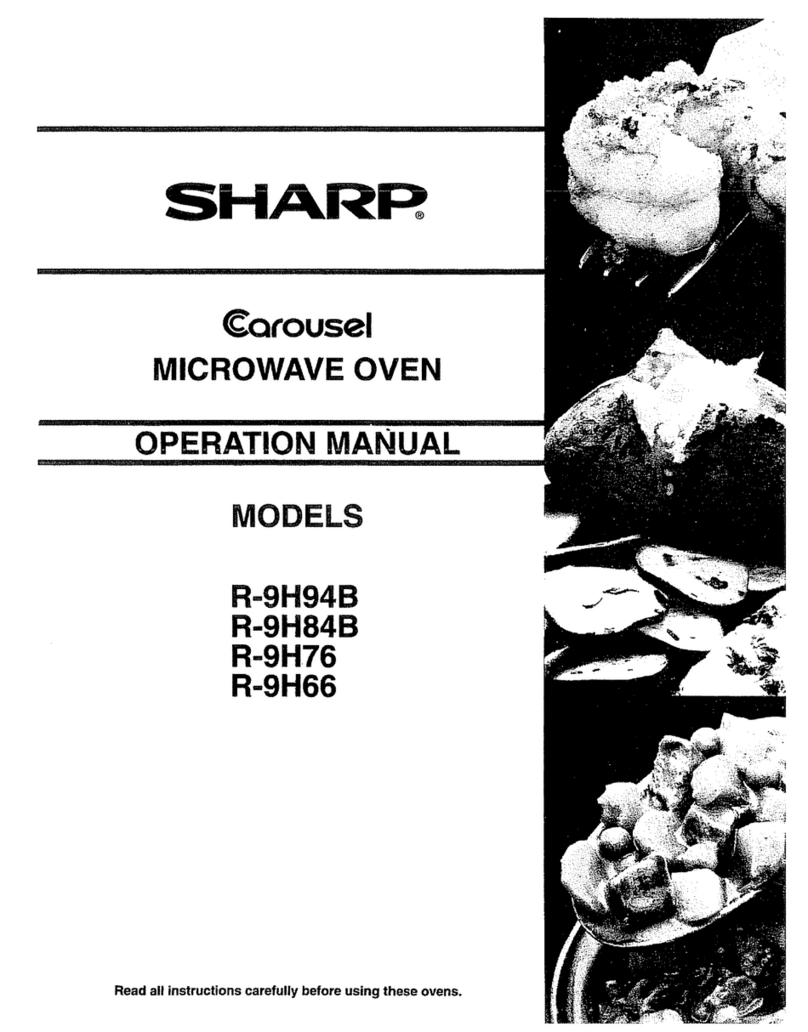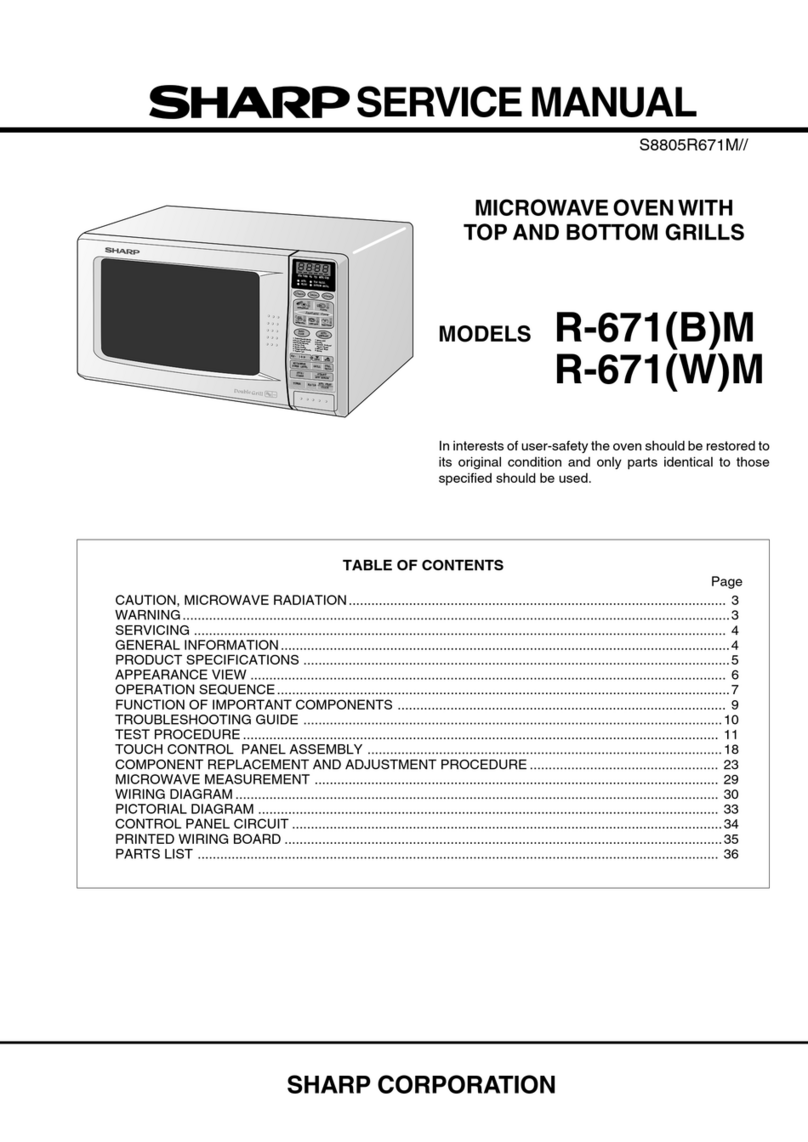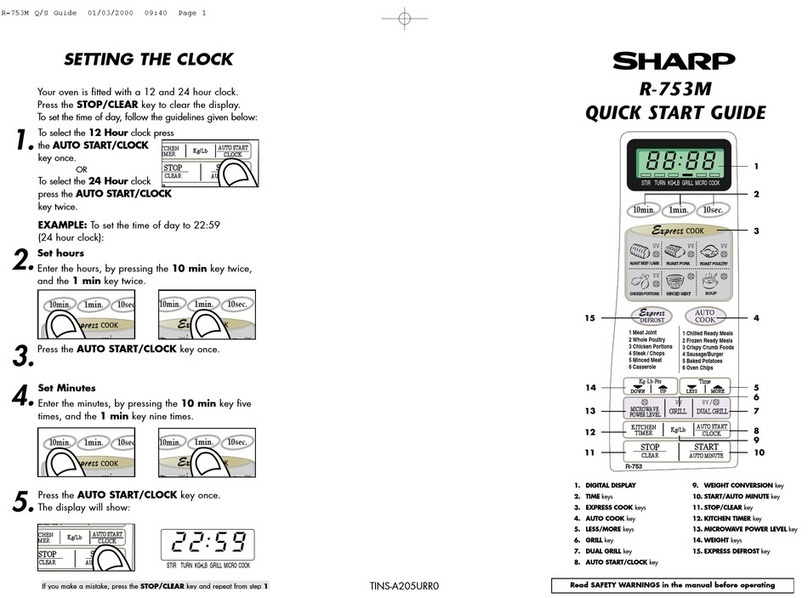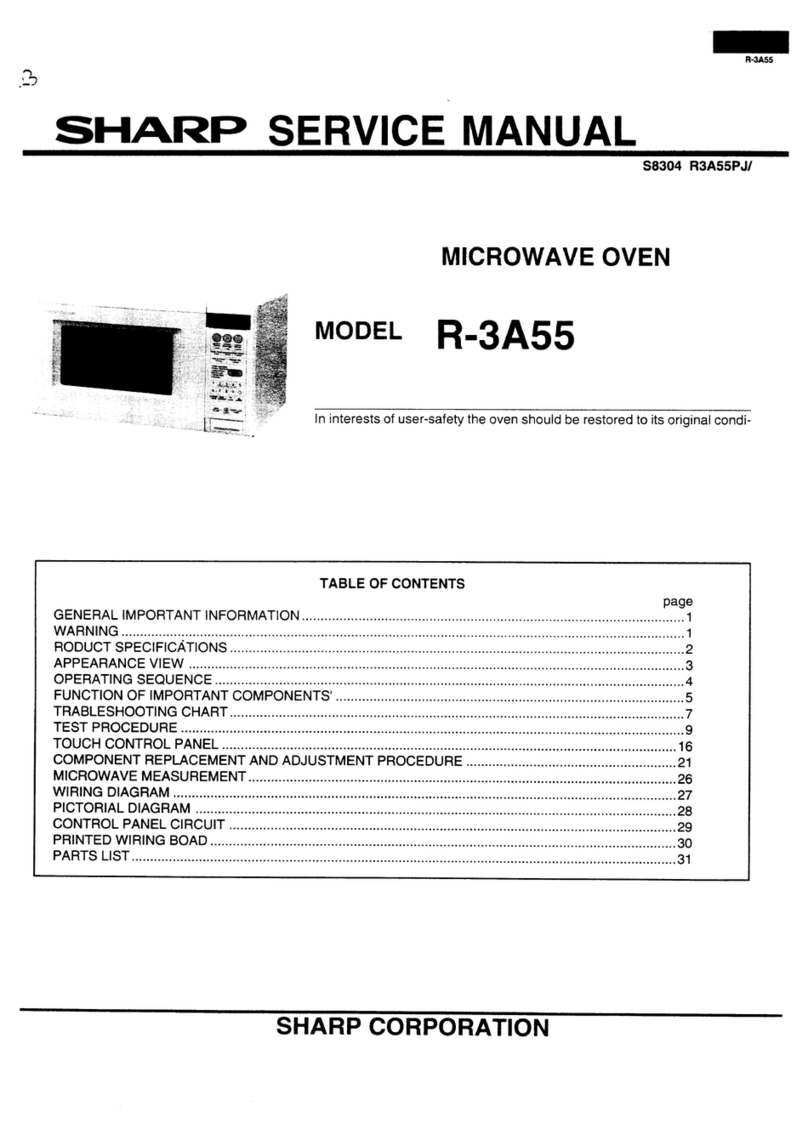
8
R-312AW
R-312AK
DOOR OPEN MECHANISM
The door is opened by pushing the open button on the
control panel, refer to the Figure D-1.
Whentheopenbuttonispushed,theopenbuttonpushesup
theswitchlever,andthentheswitchleverpushesupthethe
latch head. The latch heads are moved upward and re-
leased from latch hook. Now the door will open.
LATCH HOOK
DOOR SENSING
SWITCH
MONITOR
SWITCH
THIRD DOOR
SWITCH
SWITCH
LEVER
PRIMARY INTERLOCK
SWITCH
LATCH
HEADS
Figure D-1. Door Open Mechanism
DOOR SENSING, THIRD DOOR AND PRIMARY
INTERLOCK SWITCHES
Theprimaryinterlockswitchismountedinthelowerposition
of the latch hook and the door sensing switch in the
secondaryinterlocksystemismountedintheupperposition
of the latch hook. The third door switch is mounted in the
lower position at the back of the latch hook. They are
activated by the latch heads on the door. When the door is
opened, the switches interrupt the circuit to all components
except the oven lamp and the noise filter. A cook cycle
cannot take place until the door is firmly closed thereby
activating both interlock switches. The secondary interlock
system consists of the door sensing switch and secondary
interlock relay located on the control circuit board.
MONITOR SWITCH
Themonitorswitchisactivated(thecontactsopened)bythe
latch head on the door while the door is closed. The switch
is intended to render the oven inoperative by means of
blowning the monitor fuse when the contacts of the primary
interlock switch fail to open when the door is opened.
Functions:
1. When the door is opened, the monitor switch contact
close (to the ON condition) due to their being normally
closed. At this time the primary interlock switch is in the
OFF condition (contacts open) due to its being normally
open contact switches.
2. Asthedoorgoestoaclosedposition,themonitorswitch
contacts are first opened and then the door sensing
DESCRIPTION AND FUNCTION OF COMPONENTS
switch,theprimaryinterlockswitchandthirddoorswitch
contacts close. (On opening the door, each of these
switches operate inversely.)
3. If the door is opened, and primary interlock switch
contacts fail to open, the monitor fuse blows
simultaneouslywithclosingofthemonitorswitchcontacts.
CAUTION: BEFORE REPLACING A BLOWN MONITOR
FUSE TEST THE PRIMARY INTERLOCK
SWITCH AND MONITOR SWITCH FOR
PROPER OPERATION. (REFER TO CHAP-
TER “TEST PROCEDURE”).
NOTE: MONITOR FUSE AND SWITCH ARE REPLACED
AS AN ASSEMBLY
TURNTABLE MOTOR
The turntable motor rotates the turntable located on the
bottomof theoven cavity,so thatthe foodson theturntable
cookevenlyduringcooking.Theturntablemayturnineither
direction.
COOLING FAN MOTOR
The cooling fan motor drives a blade which draws external
cool air. This cool air is directed through the air vanes
surrounding the magnetron and cools the magnetron. This
air is channelled through the oven cavity to remove steam
and vapours given off from the heating foods. It is then
exhausted through the exhausting air vents at the oven
cavity.
OVEN THERMAL CUT-OUT
Thethermalcut-out,locatedonthetopoftheovencavity,is
designedtopreventdamage totheovenby fire.Ifthe foods
load is overcooked, by either error in cook time or defect in
the control unit, the thermal cut-out will open.
Under normal operation, the oven thermal cut-out remains
closed. However, when abnormally high temperatures are
reachedwithintheovencavity,theoventhermalcut-outwill
open at 257˚F(125˚C), causing the oven to shut down.
MAGNETRON THERMAL CUT-OUT
Thethermalcut-outlocatednearthemagnetronisdesigned
to prevent damage to the magnetron if an over heated
condition develops in the tube due to cooling fan failure,
obstructed air guide, dirty or blocked air intake, etc.
Undernormaloperation,thethermalcut-outremainsclosed.
However,whenabnormally hightemperaturesarereached
within the magnetron, the thermal cut-out will open at
203˚F(95˚C) causing the oven to shut down, when the
magnetron has cooled to 167˚F (75˚C), the thermal cut-out
closes and cook cycle will resume.
NOISE FILTER
The noise filter prevents the redio frequency interference
that might flow back in the power circuit.
